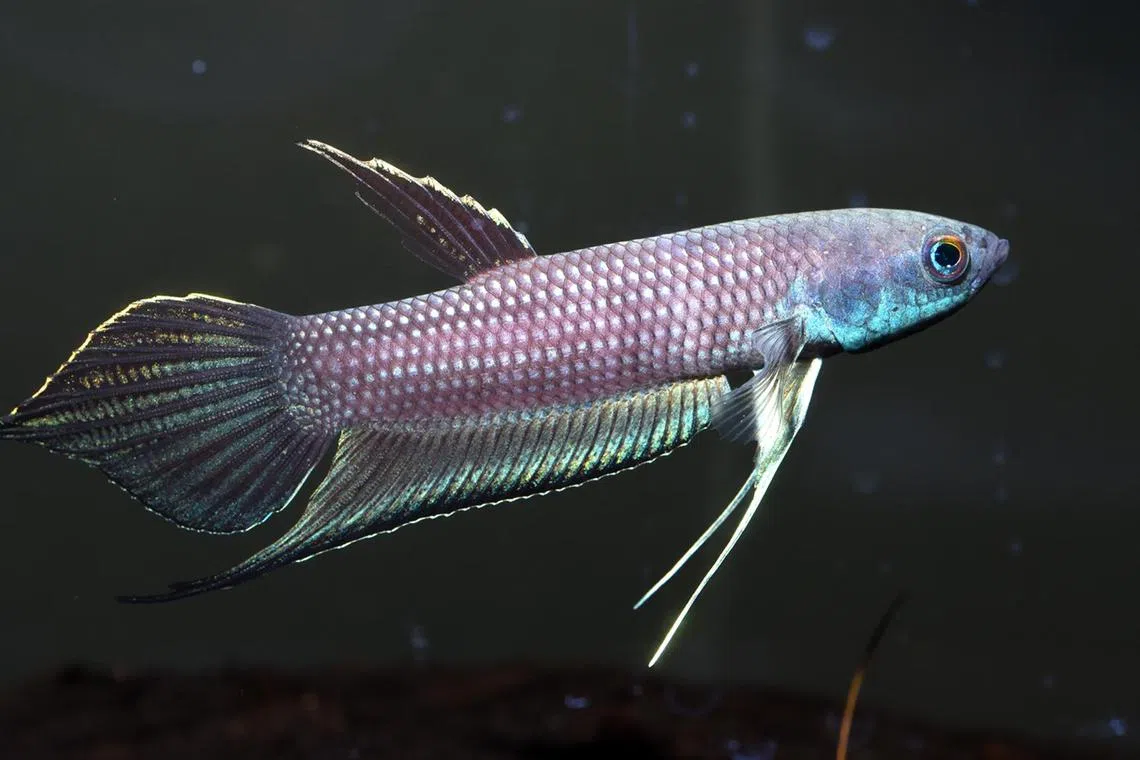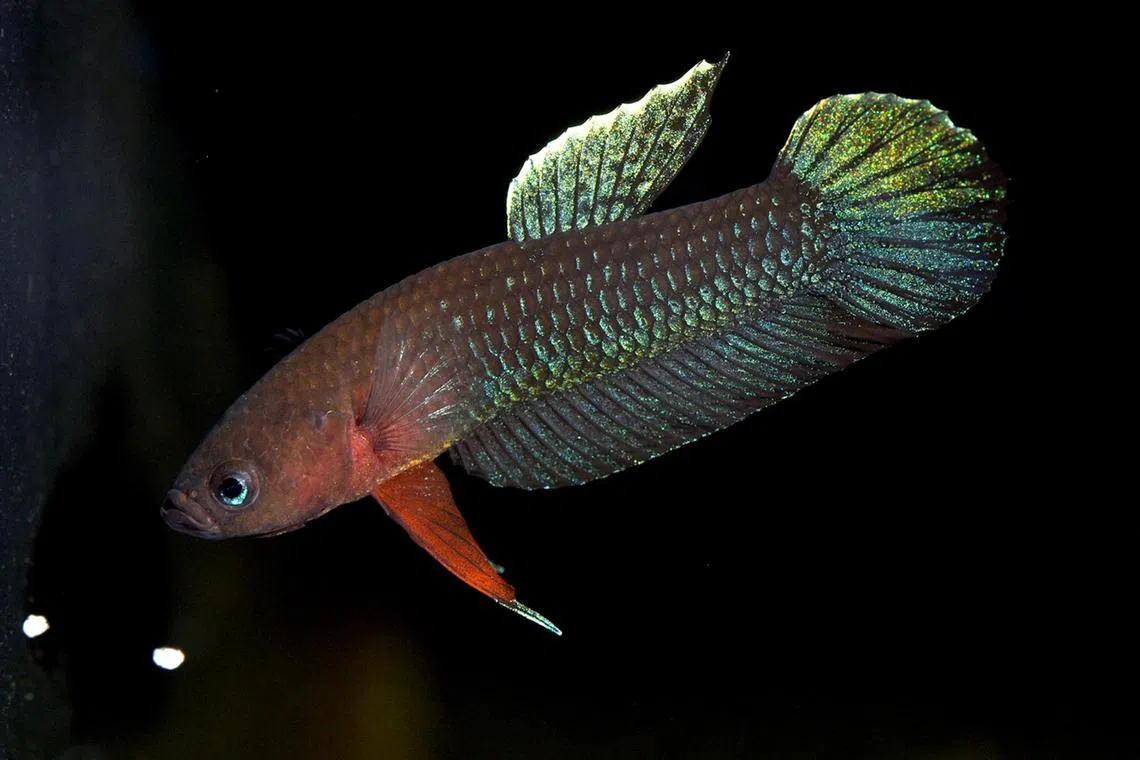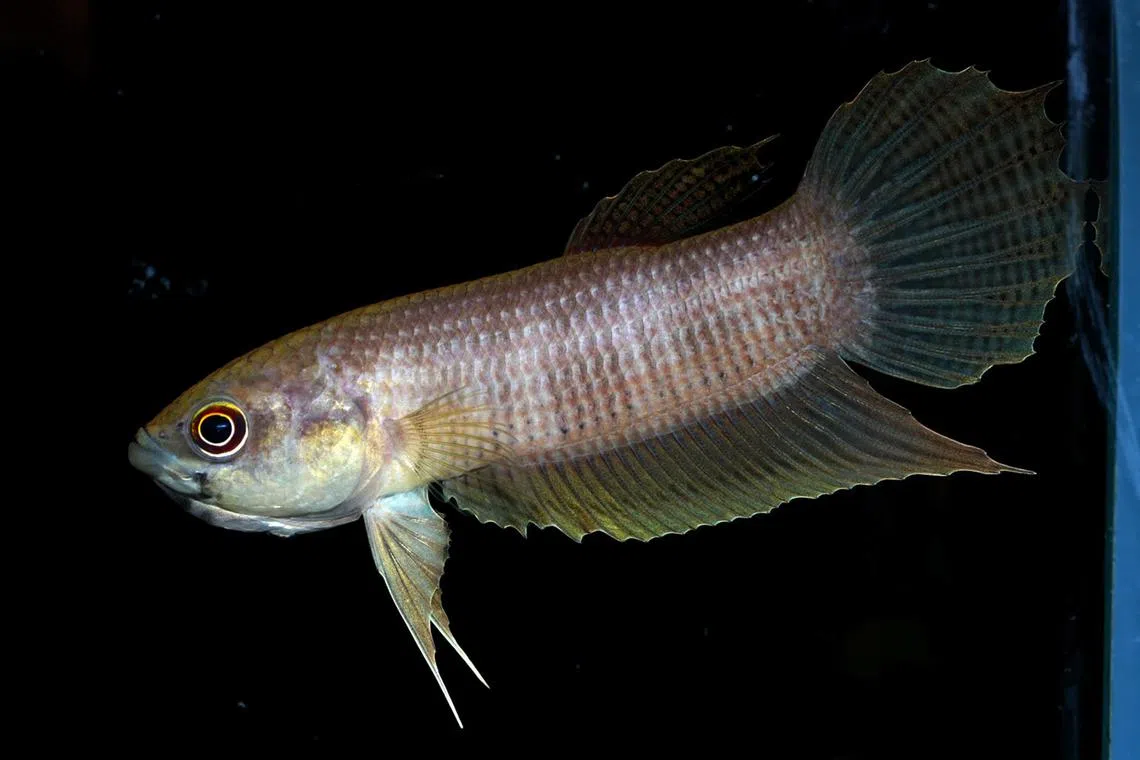New framework calls for urgent conservation of freshwater fish in South-east Asia
Sign up now: Get ST's newsletters delivered to your inbox
Follow topic:
SINGAPORE – A new framework is seeking to avert the extinction of 90 critically endangered freshwater fish species, including the Betta fish, in South-east Asia.
The Strategic Framework to Accelerate Urgent Conservation Action for Asap Freshwater Fishes in Southeast Asia calls for the immediate conservation of critically endangered freshwater fish species across the 11 South-east Asian countries. South-east Asia accounts for 30 per cent of global freshwater fish species.
While the popular Betta splendens, or Siamese fighting fish, is not endangered, 11 other species of the Betta genus are critically endangered in the wild because of the loss and degradation of their natural habitats.
The framework was unveiled on July 10 by the Shoal conservation programme, Mandai Nature and the IUCN Species Survival Commission Asian Species Action Partnership, or IUCN SSC Asap.
According to Shoal executive director Mike Baltzer, one in three freshwater fish species globally is heading for extinction, with South-east Asia “the world’s hot spot for highly threatened species”.
The framework will serve as a vital resource for researchers, conservationists and policymakers. It will provide guidance in the prioritisation of research areas to bridge knowledge gaps, the development of effective conservation programmes, and the implementation of management strategies and influencing policies.
Stakeholders like policymakers, governments, ornamental fish trade organisations and intergovernmental organisations like Asean and the Mekong River Commission could use the framework to develop conservation programmes.
Conservation attention and support often go to species like orang utans, elephants or tigers that may have wider public appeal, noted Ms Roopali Raghavan, head of terrestrial species and conservation planning at Mandai Nature, the conservation arm of Mandai Wildlife Group.
She said: “There are many groups of species that fly under the radar or are not adequately represented in ongoing conservation efforts, including freshwater fish, one of the world’s most highly threatened groups of species.”
The 86-page framework identifies the rapid loss and degradation of natural habitats and invasive species as threats to freshwater fish and outlines eight urgent priorities in freshwater fish conservation.
The framework points out that almost half of the critically endangered fish species are affected by pollution caused by rapid urban and agricultural development.

Betta cracens is a peat swamp forest freshwater fish species from Indonesia.
PHOTO: WENTIAN SHI
This could be in the form of toxic mercury from illegal gold mining that is discharged into waterways, fertiliser and pesticide run-off from agriculture, and waste discharge from human settlements and livestock operations.
The framework noted that another threat to natural habitats comes from the push for hydropower dams in recent years as South-east Asia pursues renewable energy, and called for “a need to integrate reviews by fisheries agencies on dam construction proposals”.
With extensive research showing the impact of hydropower dams on freshwater fish ecology that could greatly reduce fish populations, Mr Baltzer said: “Biological assessments should be conducted along with any dam proposal so that the true impact of dams on fishes is known and appropriate decisions regarding the construction, locations and designs of dams can be made on this basis to limit impacts as much as possible.”
The 90 critically endangered species are spread across South-east Asia, and lack of data can pose significant barriers to efficient conservation.
The ornamental fish trade, for instance, lacks data on the scale or impact of the trade. Many critically endangered freshwater fish are sold to be displayed in home or public aquariums, according to the framework. It said existing laws offering protection to some species are seldom enforced adequately.

Betta miniopinna, which is occasionally found in the aquarium trade, has its natural habitat in shallow water in swamp forests on Bintan Island, Indonesia.
PHOTO: WENTIAN SHI
Conservation work in peat swamp forests in Indonesia and Malaysia that face rapid destruction is also of great urgency, according to the framework. While the extent of this habitat in total is relatively large, interventions at individual sites can be relatively small-scale, requiring minimal resources.
Relevant agencies from the 11 countries in South-east Asia could also come together to work out regional strategies and actions as many rivers and freshwater systems in the region are shared across borders and also because of “limited institutional capacity”, the framework noted.

Betta chloropharynx is a critically endangered species. According to a new framework seeking to save 90 critically endangered freshwater fish species, these species are spread across South-east Asia, and lack of data can pose significant barriers to efficient conservation.
PHOTO: DAI JIANHUI
Maintaining freshwater fishes would play an important role in the freshwater ecosystems in South-east Asia, said Asap director Nerissa Chao. “Safeguarding not only the species but also their habitats has a profound direct impact on the livelihoods of the community, including food security, income generation and access to clean water sources,” she said.


